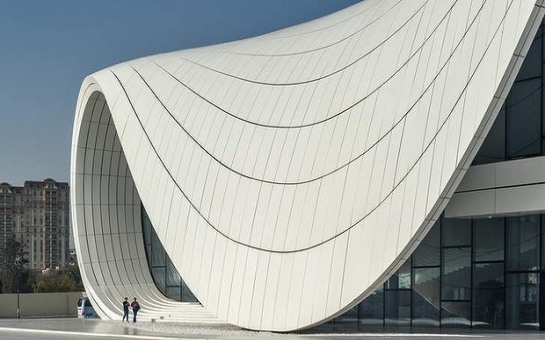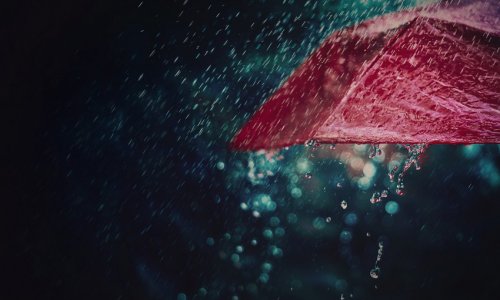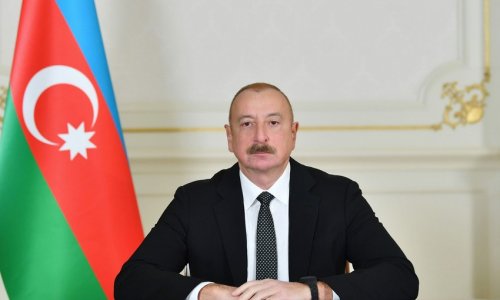Expect the unexpected when you venture to the ancient Caucasus, writes Isobel King. I stare at the wizened old leather shoe in the history museum in Yerevan and lean in again to double check the date: 3500BC. I do the sums - that's more than 5500 years old.
But this little moccasin, sewn from one piece of leather, has me mesmerised. It's a lasting reminder of just how ancient, yet relatively little known, this part of the world is.
For me, it's the final day of an eye-opening tour through Azerbaijan, Georgia and Armenia, former Soviet republics that are part of a region known as the Caucasus.
Peregrine Adventures spent a year putting together the 17-day itinerary and we are on the maiden tour. It's a group of 13, including two spirited women in their 70s, and we represent seven different countries between us, not including Bob, our Russian guide, proving curiosity has no barriers.
The capital of Baku is the base for most of our four days in Azerbaijan, where the expedition begins. It's a city dripping in oil wealth, with a mishmash of architectural styles that's oddly compelling.
There are the majestic buildings dating from Azerbaijan's days under the Russian tsars, just blocks away from drab Soviet towers awaiting "beautification". The inventive approach is to dress their facades in stone, attach ornate balconies - et voila, as good as old.
Wandering around the cobbled streets of Baku's mediaeval walled centre, taking in the Palace of the Shirvanshahs and other historic sites, the Dubai-like glass Flame Towers beyond the walls lend the perspective a science-fiction quality.
The newly completed Heydar Aliyev Cultural Centre is a showstopper, an astounding piece of modern architecture designed by famous Iraqi-born British architect Zaha Hadid. It's like a white serpent rising from a grassy knoll that suddenly livens up the trip in from the airport.
Life on the streets of Baku feels similar to a modern city anywhere. Islamic Azerbaijan is a historically tolerant society. Cafes, restaurants and shops are buzzing, and in the boulevards and parks by the waterfront, adjoining the Caspian Sea, the world's biggest salt lake, burqa-clad women can be seen strolling alongside young things in the latest fashion. At night, the city is beautifully lit, reminiscent at times of strolling around Paris. Hence its name, Paris of the East.Well, not quite.
We take the hour's trip to Qobustan, past endless oil rigs, and clamber up a rocky path in the heat to inspect ancient rock engravings in nooks and crannies everywhere.
Civilisation in this UNESCO-protected region has been traced back 40,000 years, and the fascinating on-site museum captures slabs of it in highly informative and interactive displays. At the foot of the hill, I stop at a fenced-off rock engraving made by a passing Roman officer. It dates from AD90. Graffiti spans all the centuries.
On the road north-west to Georgia, as we watch the amazing transition from dry, salty plains to the first few sprigs of green inland, to the incredibly lush countryside that abruptly springs from nowhere all in a matter of hours, we stop in Sheki, visiting the 18th-century Shaki Khan Palace.
It's a marked departure from the elaborate mosques and stone tombs seen earlier. This was the summer palace of the local ruling Shaki Khans. Its intricate, timber-framed stained-glass windows, still hand-crafted locally, are apparently popular with wealthy sheiks. Inside, every room is lined with vibrantly coloured frescoes.
The palace and Baku's mediaeval city are Azerbaijan's historical highlights for me.
In our seven days in Georgia, it seems as if we have criss-crossed its entire 70,000 square kilometres in our little minibus, when in reality we have managed a select grab bag of highlights, including half a dozen or so UNESCO World Heritage sites. Georgians adopted Christianity in the early 4th century, so historic churches and monasteries are regular stops.
The whole country feels freshly renovated, from cities, to roads, to hotels, to tourist attractions. Scaffolding and road works are as etched in my memory as the mountains, rivers, fields of wild flowers and endless green vistas that have accompanied our travels.
The 10-year presidency of pro-western Mikheil Saakashvili, which ended with the elections last November, has marked the country's economic rejuvenation after a decade of chaos.
We have driven through winemaking regions in Georgia's south and had our first introduction to chacha, the local rocket fuel, courtesy of farmer Simon and his family entourage.
In their purpose-built stone cellar in the small town of Sighnaghi, a stone's throw from the Azerbaijan border, we are shown a contraption that looks positively mediaeval. It's the chacha maker, the "grape vodka" found everywhere. It's wincingly potent and sets the mood for a lively cellar feast. That lunch was our first introduction to khachapuri, the devilishly moreish flat cheese bread that's on every menu.
Wine lovers should note: Georgia's winemaking tradition goes back 8000 years. An official wine map reveals snaking trails everywhere and a baffling 437 different grape varieties. If in doubt, the ever-popular Saperavi reds and Rkatsiteli whites are sound bets.
We have gone north and climbed into the heart of Europe's highest mountain range - the snow-capped Greater Caucasus. It stretches for 1200 kilometres, forming the border with Russia to the north.
Our destination for two nights is the remote ski resort of Gudauri, heaving with skiiers in winter apparently, but a desolate spot in summer: a scattering of buildings on austere, grassy slopes. The lone supermarket proves the main social hub on our visit.
At 2196 metres, Gudauri is the highest village on the famous Georgian Military Highway, an ancient north-south trading route that has been recently upgraded into a flawless stretch of road.
It's the launch pad for a day trip to nearby Kazbegi, where a one-hour hike up the steep, rocky foothills (jeep optional) is rewarded with hauntingly beautiful views from the remote 14th-century Gergeti Trinity Church. No invader was going to take this prize easily.
The clouds clear to offer a perfect view of Mount Kazbeg, at 5047 metres, one of the higher glaciers in the Caucasus.
We have gone west as far as Kutaisi, the country's second largest city, stopping on the way at Stalin's birthplace in Gori. His humble family home lies in the grounds of the Stalin Museum, where rooms of black-and-white photographs, news clippings and memorabilia document not just the rise of a dictator, but graphic examples of hardships and horrors.
And, of course, we have spent time in the charming capital of Tbilisi, an easily walkable city of 1.2 million divided by the Mtkvari River. It's in the final throes of an extensive renovation.
The UNESCO-protected old district has had most of the buildings' crumbling facades replaced. They contrast with contemporary structures nearby.
It's a laid-back city, where most of the action centres around the main thoroughfare, Rustaveli Avenue and the lively network of streets in the old town.
The pace has been fast and furious, with a couple of 10-hour days on the road. Framed by the bus window are watchtowers and forts, crumbling stone houses and defunct old factories, new buildings with shiny tin roofs, and the drab, grey apartment blocks that dot the landscape everywhere in this part of the world, legacies of the Soviet era.
I'm still prizing the grit out of my hair from a visit to the 12th-century cave city of Vardzia, in the south-west. I conclude that tunnels, perilously steep steps, low rock ceilings and a power blackout are not a good combination. The city was carved into a mountain, stretching across 500 metres, a feat of human endeavour.
Nino, our bubbly Georgian guide, succinctly sums up her country's history: "So many times, occupied, destroyed, rebuilt . . . occupied, destroyed, rebuilt". She may as well have been talking about any of the countries we visit. Preserving their architecture against the constant onslaught has been challenging. Mongols, Persians, Russians and Ottomans have all fancied their chance in this strategic crossroads of Europe and Asia. Many of the historic sites we visit have been rebuilt from ruins.
I have seen so many monasteries and churches that they have merged into a glorious pastiche of soaring stone structures, frescoes, brightly coloured icons and priests in black robes going about their business, seemingly impervious to the coachloads of tourists.
Mostly I tend to remember them by their locations: behind protective walls, such as the magnificent Svetitskhoveli Cathedral in the centre of historic Mtskheta, where Christ's robe is allegedly buried; on remote hilltops, such as the 6th century Jvari Church peering down over Mtskheta; and in Kutaisi, the collection of beautiful stone buildings that make up Gelati Monastery, where of one of the greatest Georgian kings, David the Builder, has his tomb.
The trio of countries was part of the Soviet Union up until their independence in 1991. The itinerary has been carefully mapped to avoid any potential hot spots (see trip notes). For us, everywhere we travel feels safe and welcoming.
Russian is the de-facto second language and English can be patchy outside the capitals, so although independent travel is possible, I imagine it could be tricky, once the complication of visas and long border crossings are taken into account.
Bakudaily.az











